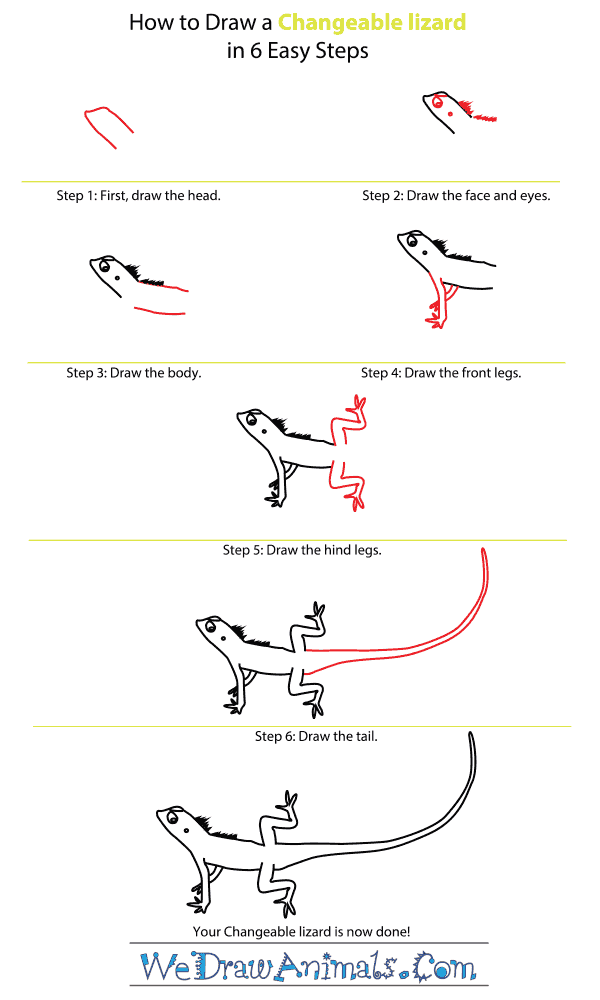In this quick tutorial you'll learn how to draw a Changeable Lizard in 6 easy steps - great for kids and novice artists.
The images above represent how your finished drawing is going to look and the steps involved.
Below are the individual steps - you can click on each one for a High Resolution printable PDF version.
At the bottom you can read some interesting facts about the Changeable Lizard.
Make sure you also check out any of the hundreds of drawing tutorials grouped by category.
How to Draw a Changeable Lizard - Step-by-Step Tutorial
Step 1: To make the lizard's head, draw a slightly irregular rectangle. Leave the bottom open.
Step 2: Draw the eyes up near the top of the rectangle and some spiny details to the head and neck.
Step 3: Next, draw two angled lines to make the body. Leave a gap on the bottom line so we can add the legs.
Step 4: Draw the front legs. Use nearly straight lines and make pointy toes.
Step 5: Next are the back legs. They are L shapes, bending away from the lizard's body. Add pointy toes to these feet, too.
Step 6: Last, draw the lizard's long, pointy tail with two long, gently curving lines. This lizard can change its hue from brown to bright green and orange!
Interesting Facts about the CHANGEABLE LIZARD
The Changeable Lizard is a member of the reptile family and the scientific term for them is Calotes versicolor. Other common names of this animal are Oriental Garden Lizard, Eastern Garden Lizard and Crested Tree Lizard. They get a red throat during mating season and are therefore nicknamed Bloodsucker. Their teeth are used for gripping food, and it is swallowed whole, sometimes choking younger members.
Did you know?
- They can have up to 20 eggs during pregnancy.
- There can be an overall length of 1.5 feet.
- The eggs are 5/8 of an inch long.
- These animal’s eggs hatch in about 9 weeks.
- Their young can breed at 1 year old.
- The species was introduced to the Asian islands in the 1980s.
The animal can change its skin to a large variety of colors and move its eyes in different directions at the same time. This animal eats vegetation, insects, rodents, other lizards, and is native to Asia. Males attract their mate by extending their reddened neck. They threaten other males during breeding season by pushing their body up and down. The long spindled and leathery eggs are either hidden in trees or buried underground.







